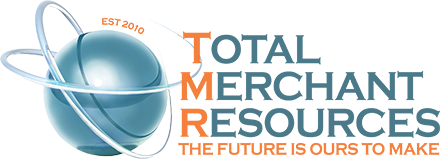
Equipment leasing is a smart strategy for many businesses that need to keep up with technology and equipment without the hefty upfront costs. This approach allows businesses to use the latest tools and machinery, improving efficiency and productivity while managing cash flow effectively.
Leasing provides several advantages over buying equipment outright. It requires less initial money, offering immediate access to necessary equipment without a large purchase. This means businesses can allocate funds to other important areas, such as marketing or expanding team size.
Knowing the basics of leasing, how to choose the right option, and tips for negotiating better terms can make a significant difference in the leasing experience. Making informed decisions helps ensure that you’re getting the best value for your business, setting it up for success without financial strain.
Understanding these key components can assist in avoiding potential pitfalls and maximizing the benefits of leasing agreements.
Understanding Equipment Leasing Basics
Equipment leasing is a way for businesses to use needed tools or machinery without having to buy them outright. When you lease equipment, you get access to the equipment for a specific period while making regular payments. This is an appealing option for many businesses because it allows flexibility and preserves cash flow.
There are two main types of equipment leases: operating leases and finance leases. An operating lease is usually short-term and might include maintenance services. You don’t own the equipment at the end of the lease term but can often renew the lease if needed.
On the other hand, a finance lease, also known as a capital lease, is a long-term commitment. After completing the lease payments, you usually have the option to purchase the equipment for a nominal fee.
Equipment leasing involves understanding some key terms:
- Lease Term: The length of time you’ll be paying for the leased equipment.
- Residual Value: The equipment’s value at the end of the lease term.
- Fair Market Value (FMV): The current value of the equipment in an open market.
Before entering into a lease agreement, it’s crucial to consider your business needs and the type of equipment required. Leasing can provide access to the latest technology, and it might offer tax advantages. However, it’s essential to weigh the overall costs and benefits. Understanding these basics can help businesses make informed decisions about equipment leasing, ensuring they choose the best financial path.
Benefits of Leasing Over Buying
Leasing equipment offers several advantages, especially for small businesses or startups that must manage cash flow effectively. Here are some key benefits of leasing instead of buying equipment outright:
1. Lower Initial Costs: Leasing reduces the need for a large upfront payment. This allows businesses to preserve their capital and invest in other areas, like marketing or hiring new employees.
2. Access to Latest Technology: Technology changes quickly, and leasing allows businesses to keep up with the latest advancements without constantly buying new equipment. At the end of the lease, you can upgrade to newer models, ensuring that your business stays competitive.
3. Flexibility: Leasing provides more flexibility in managing equipment needs. Short-term leases mean that you’re not stuck with outdated or unnecessary equipment once your business grows or changes direction.
4. Tax Benefits: Lease payments are often considered a business expense, which can be deducted from taxable income. This tax benefit reduces the overall financial burden and keeps more money in your business.
5. Improved Cash Flow: With predictable monthly payments, businesses can plan their finances more effectively. This allows for better cash flow management and reduces the chances of unexpected financial strain.
6. Maintenance and Repairs: Many lease agreements include maintenance and repair services, which can further save money by avoiding large repair bills. Knowing that your equipment is covered gives you peace of mind.
Leasing equipment can ease the financial load on a business and provide access to necessary tools without the big cost of buying. This approach not only supports growth but also provides operational flexibility, making it a smart choice for many businesses.
Steps to Choose the Right Leasing Option
Selecting the right leasing option is vital for maximizing the benefits of equipment leasing. Follow these steps to ensure you make the best choice for your business.
1. Assess Your Needs: Begin by determining what type of equipment your business requires. Think about the specific features and capabilities you need and establish a budget for how much you can afford in monthly lease payments.
2. Research Lenders: Look into different leasing companies and lenders. Compare their terms, interest rates, and services offered. Some companies specialize in particular industries, which might make them more suitable for your business.
3. Evaluate Lease Types: Decide between an operating lease and a finance lease. Consider the length of time you need the equipment and whether you want to purchase it at the end of the lease term.
4. Check Hidden Costs: Look for any additional fees or penalties that may apply, such as early termination fees or equipment return charges. Understanding these costs upfront prevents surprises later on.
5. Understand Lease Terms: Pay close attention to the lease agreement. Ensure it includes terms that meet your needs, such as maintenance, repair, and upgrade policies. Clarify any points of confusion with the lender.
6. Get Professional Advice: Consult with a financial advisor or legal expert if you’re uncertain about any aspect of the lease. Expert guidance can help you navigate complex terms and make informed decisions.
Following these steps will help you select a leasing option that fits your business needs, financial goals, and growth plans.
Tips for Negotiating Better Lease Terms
Negotiating lease terms can significantly impact how beneficial your lease will be. Here are some tips to help you secure better terms for your equipment leasing agreement:
1. Start with Research: Knowledge is power. Before negotiating, research the market rates and standard terms for the equipment you need. This insight will guide your expectations and help you identify a fair deal.
2. Highlight Your Business Value: Showcase your business’s stability and growth potential to the lender. A strong business case can encourage them to offer more favorable terms because they see you as a reliable partner.
3. Negotiate Flexibility: Request flexibility in the lease terms, such as the ability to upgrade equipment mid-term or extend the lease at the same rate. Flexibility can prevent you from being locked into terms that no longer suit your business.
4. Focus on Total Cost: Look beyond monthly payments. Ask for reductions in interest rates or additional services like maintenance and training to be included at no extra cost. This approach can lower the overall cost of the lease.
5. Request a Trial Period: If unsure about the equipment, ask for a trial period before fully committing. This trial can confirm that the equipment meets your needs without committing to a long-term lease immediately.
6. Don’t Hesitate to Walk Away: If the terms don’t suit your needs, be willing to look elsewhere. Sometimes, this approach can prompt the lender to rethink and present better terms to secure your business.
By applying these negotiation strategies, you can achieve a lease agreement that offers value and aligns with your business objectives.
Conclusion
Equipment leasing can serve as an excellent financial strategy for businesses of all sizes. Leasing allows for flexibility and access to the latest technology while maintaining cash flow. With a clear understanding of the basics and benefits, businesses can leverage this option to stay competitive.
Choosing the right leasing option involves careful consideration and planning. Businesses should assess their needs, explore different lease types, and understand the terms and costs involved.
To explore how equipment leasing can work for your business, reach out to Total Merchant Resources. Our team offers business loan advance solutions that fit your needs, helping you make savvy financial decisions without compromising on quality or progress!



